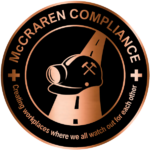Original article published by Transport Topics
Evidence Shows It’s Not a Time for Employers to Relax

As state laws and societal attitudes shift regarding recreational and medical marijuana use nationwide, employers in some fields are re-evaluating workplace drug testing. At the same time, however, this heightened attention on marijuana use is spurring new research into its impacts on health and safety. The emerging evidence propels an argument that employers — particularly in the transportation sector — should stay vigilant.
The history of workplace drug testing for safety-sensitive professions isn’t particularly long. More than 35 years ago, Congress and regulatory bodies, including the U.S. Department of Transportation, reacted swiftly after it was found that the crew on an Amtrak train that was involved in a fatal crash — one that killed 16 and injured 174 — had tested positive for marijuana. In the aftermath, federal mandatory drug screenings for employees in safety-sensitive industries were authorized, including trucking and others regulated by DOT. About a year later, President Ronald Reagan signed the Anti-Drug Abuse Act of 1988.
Over the years since, Quest Diagnostics has been reporting on drug use trends via its Drug Testing Index, and has produced a series of reports providing insight into workforce drug use based on positivity rates of de-identified laboratory tests for a range of drugs.
While there fortunately hasn’t been another deadly incident on the scale of the Amtrak crash, there are warning signs that drug misuse is as dangerous as ever. In 2021, overall results of the DTI illustrated that the rate of positive drug tests among America’s workforce has reached its highest since 2001, up more than 30% from an all-time low in 2010.
Specifically, the report revealed several notable trends, like higher rates of positivity in individuals tested after on-the-job accidents. In both the general U.S. data and federally mandated workforces, the increase in positivity rates on post-accident tests for marijuana has outpaced those in pre-employment tests.
Marijuana positivity rates have also reached a 20-year high. In the general U.S. workforce, urine tests for marijuana saw an 8.3% increase, the highest positivity rate ever reported in the DTI.


